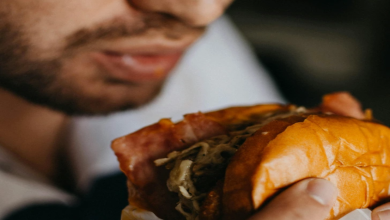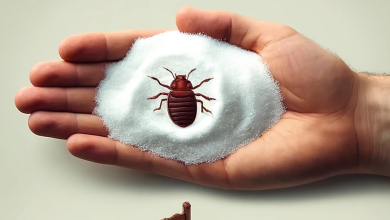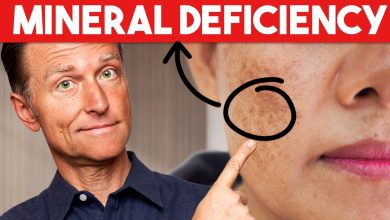A radiant smile can transform your entire appearance, but professional teeth whitening can cost hundreds and may involve harsh chemicals that irritate sensitive gums or damage enamel. Enter a popular natural solution that’s made its way into wellness routines: strawberries and baking soda.
This combination, praised by natural beauty advocates, claims to offer a gentle, effective alternative for removing surface stains. But how safe is it? And more importantly—does it actually work? Let’s break down the science, the method, and the real impact of using this fruit-based formula to whiten your teeth naturally.

Why Strawberries? The Role of Malic Acid
Strawberries aren’t just delicious—they contain malic acid, a natural compound known for its gentle astringent and bleaching properties. In fruits, malic acid helps break down surface discoloration caused by coffee, wine, soda, and other stain-producing foods. When applied to teeth, it can act like a natural exfoliant that dissolves superficial stains, helping reveal a cleaner, brighter smile.
Why Baking Soda? The Gentle Abrasive Effect
Baking soda (sodium bicarbonate) has long been used in oral hygiene. It works not by bleaching but by physically removing plaque and yellow surface stains through mild abrasion. When combined with malic acid from strawberries, it enhances the cleansing effect—while still being less abrasive than many over-the-counter whitening toothpastes.
How to Use Strawberries and Baking Soda for Teeth Whitening
If you want to try this natural method at home, here’s a safe and easy approach:
Ingredients:
- 1 ripe strawberry (medium to large size)
- ½ teaspoon baking soda
Instructions:
- Mash the strawberry into a smooth paste.
- Mix in the baking soda until well combined.
- Apply the paste to your teeth using a soft-bristled toothbrush or clean finger.
- Let it sit for 1–2 minutes (no longer).
- Rinse your mouth thoroughly with water.
- Follow up with regular brushing using fluoride toothpaste.
*** Recommended Frequency: Once a week at most. Overuse may harm tooth enamel due to the natural fruit acids.

Benefits of This Remedy
- Natural and non-toxic
- Low-cost and made with simple kitchen ingredients
- Fresher breath from natural fruit acids
- Removes mild surface stains without chemical bleaching agents
- Enhances smile brightness with regular care
- Important Precautions for Safe Use
Even natural remedies can have risks if overused. Keep these in mind:
- Don’t overdo it: The acid from strawberries, when used too frequently, can weaken enamel—especially if left on for too long.
- Not a deep whitener: This method works best for surface stains, not intrinsic discoloration or deeply embedded plaque.
- Avoid brushing immediately after application: Your enamel is slightly softened by acid. Rinse, wait 20–30 minutes, then brush.
- Avoid if you have sensitivity: If your teeth are already prone to pain or discomfort, skip this method or consult your dentist.
- Rinse thoroughly: Any sugar or acid residue can increase the risk of decay.

Other Natural Whitening Alternatives to Try
If strawberries and baking soda aren’t your ideal solution, here are a few more safe, natural whitening options:
Oil pulling with coconut oil
Swishing coconut oil for 10–15 minutes may help reduce plaque and improve overall oral hygiene.
Activated charcoal
A trendy option for surface stain removal—but use with caution and no more than once a week, as it can be abrasive.
Baking soda + hydrogen peroxide
A popular DIY method—just be very cautious and use it no more than once a week, as it can irritate gums and damage enamel.
Crunchy fruits and vegetables
Raw apples, carrots, and celery act like natural scrubbers, cleaning tooth surfaces while increasing saliva flow for a neutral pH.
The Verdict: Can Strawberries and Baking Soda Really Whiten Teeth?
Yes—but with important limitations. This remedy can help remove minor stains from coffee, tea, or soda and leave your mouth feeling fresh. However, it won’t replace the power of professional cleanings or stronger whitening solutions when needed.
Used responsibly, this fruity formula is a gentle way to enhance your smile naturally and affordably. Just remember: when it comes to oral health, consistency is more important than shortcuts. Good daily brushing, flossing, and regular dental checkups are still your best defense against yellowing teeth and plaque buildup.
Final Thought:
For those looking to brighten their smile the natural way, strawberries and baking soda offer a fun and easy occasional treatment. Use it sparingly, pair it with a strong oral care routine, and enjoy the glow of a smile that’s not only brighter—but healthier too.
📌 Disclaimer: This article is for informational purposes only. Always consult your dentist before starting any new whitening treatments, especially if you have tooth sensitivity, dental restorations, or gum concerns.







